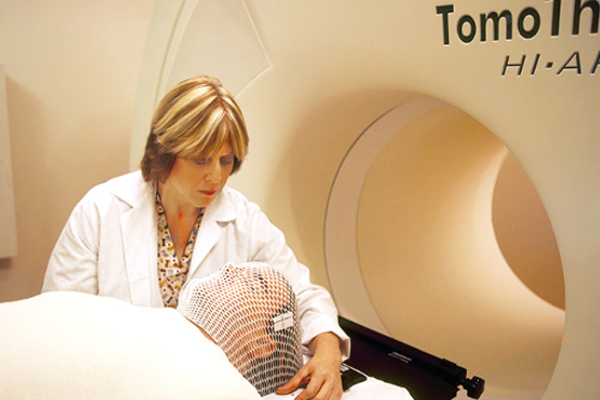Proton therapy is one of the latest techniques for treating several specific types of cancer. It has the potential to increase the dose of radiation to the tumor while reducing the dose to the normal tissue, meaning the tumor can be treated more aggressively while minimizing the amount of damage to the surrounding tissue. Because of this, it is most commonly recommended for patients who have tumors in especially delicate parts of the body, such as the eye, brain or spinal cord.

What is proton therapy?
It is a type of radiotherapy, which, due to its physical properties, is regarded as both effective and particularly well tolerable. For many years now it has been successfully applied to cancer patients worldwide, yet is still only available in select few countries. There are currently six German cancer centers with facilities to perform proton therapy, according to the Particle Therapy Co-Operative Group.
Proton therapy is a new, highly effective, but expensive treatment method for many cancers. The studies performed so far, along with the nature of the treatment, suggest many clinical benefits. It is considered to be effective at accurately targeting tumor tissue while being relatively gentle on the rest of the body. Still, it is a relatively new therapy option that has not yet been subjected to long-term empirical studies, so the long-term effects are not known.
Who is a candidate for proton therapy?
Recent technical progress has made proton radiation therapy more accessible to a wider number of patients. Still, its indications are limited. Due to the limited capacity of the facilities, most clinics must determine indications by taking into account the technical requirements and potential medical benefits of this therapy for each condition. This means that generally only patients with localized tumors in the area of head, spine, and pelvis who have not been pre-irradiated are candidates for the therapy. In addition, proton therapy may also be considered for childhood tumors, because immature tissue is more sensitive to radiation and may be benefited by a lower dose.
What does a proton therapy treatment look like?
Proton therapy is usually performed as an outpatient procedure and does not require a hospital stay during treatment. Planning a the treatment typically requires several weeks of planning, including imaging and diagnostic scans, before the actual therapy begins. The patient undergoes radiation sessions five times a week for 45 minutes at a time for an overall duration of six weeks.
Watch the following video to find out what the radiation session looks like.
Premier Healthcare Germany has helped several patients receive proton therapy in Germany. For more information, contact us via our website or phone.
